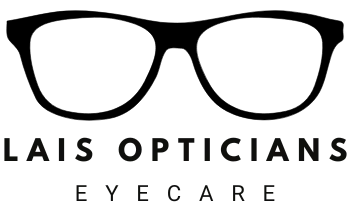As we journey through life, our bodies undergo several changes, and our eyesight is no exception. Presbyopia, commonly referred to as "ageing eyes," is a natural vision condition that affects most individuals as they reach their mid-40s and beyond, which makes it more difficult to see clearly up-close. In this blog, we will explore what presbyopia is, its causes, symptoms, and available treatment options to help you maintain optimal vision and enjoy a better quality of life.

Understanding Presbyopia
Presbyopia is a common age-related eye condition characterized by the gradual loss of the eye's ability to focus on nearby objects. Unlike other refractive errors like short-sightedness (myopia) or farsightedness (hyperopia), which affect distance vision, presbyopia specifically impacts close-up vision, making tasks like reading, texting, or working on a computer screen challenging.

Causes of Presbyopia
The primary cause of presbyopia lies in the gradual aging of the eye's lens and surrounding muscles. As we age, the lens loses its flexibility, reducing its ability to change shape and adjust focus. Additionally, the ciliary muscles responsible for lens accommodation also weaken, leading to further difficulty in focusing on nearby objects.
Common Symptoms
Presbyopia presents itself subtly at first, with individuals noticing that they need to hold reading materials farther away to see them clearly. Other common symptoms include eyestrain, headaches, and difficulty reading in dim lighting. Squinting and eye fatigue are also typical signs of presbyopia.
Diagnosis and Eye Exams
If you experience any of the symptoms mentioned above, it is essential to schedule an eye exam with an optometrist or ophthalmologist. During the eye examination, the eye care professional will perform a series of tests to determine your visual acuity and check for presbyopia and other vision issues. Early diagnosis allows for timely intervention and management of the condition.
Treatment Options
Thankfully, several effective treatment options are available to help individuals cope with presbyopia:
Reading Glasses: Single vision reading glasses are available and can be a quick and affordable solution for presbyopia. These glasses would be created according to your near/reading prescription and only be worn when needed for close work.
Bifocal or Multifocal Glasses: These eyeglasses have different sections for distance and near vision, allowing users to switch between the two easily. A bifocal lens is effectively your distance prescription lens with a smaller lens added on top containing your Near Addition.
The varifocal lens looks like a single-vision lens, however is manufactured to place your distance prescription at the top of the lens, and then gradually increase the positive power down the lens to give a smooth change in prescription. You effectively have Distance, Near and Intermediate prescriptions all in one lens.

Contact Lenses: Multifocal contact lenses are another option for those who prefer not to wear eyeglasses. These lenses contain different prescriptions for various distances.
Monovision Contact Lenses: This approach involves wearing a distance prescription lens in one eye and a near prescription lens in the other eye. It may take some time to adapt to monovision, but many people find it effective.
Refractive Surgery: In some cases, individuals may opt for surgical interventions such as LASIK or PRK to correct presbyopia. These surgeries reshape the cornea, or replace the lens to enhance close-up vision, reducing the need for reading glasses.
Visual Aids: We can also utilise certain items which can aid us whilst viewing objects close-up. For example, Hand-held magnifiers, digital magnifiers, LED reading lights. Or we can make life a little easier by reading by a window during the day, or increasing font-size on laptops and phones. It may be a case of searching for the correct item for you.
Presbyopia is a natural part of the aging process and is a vision condition that affects many individuals worldwide. While it may be inevitable, there are various treatment options available to help manage and correct this age-related vision change.
Remember, regular eye exams and early intervention are key to maintaining clear vision and enjoying the world around you. Embrace the changes that come with age, and seek professional eye care to ensure you continue to see life's beauty with clarity and focus.
...
Please contact your local Eye Care Professional for further advice or call Lais Opticians directly on 020 8478 1631
